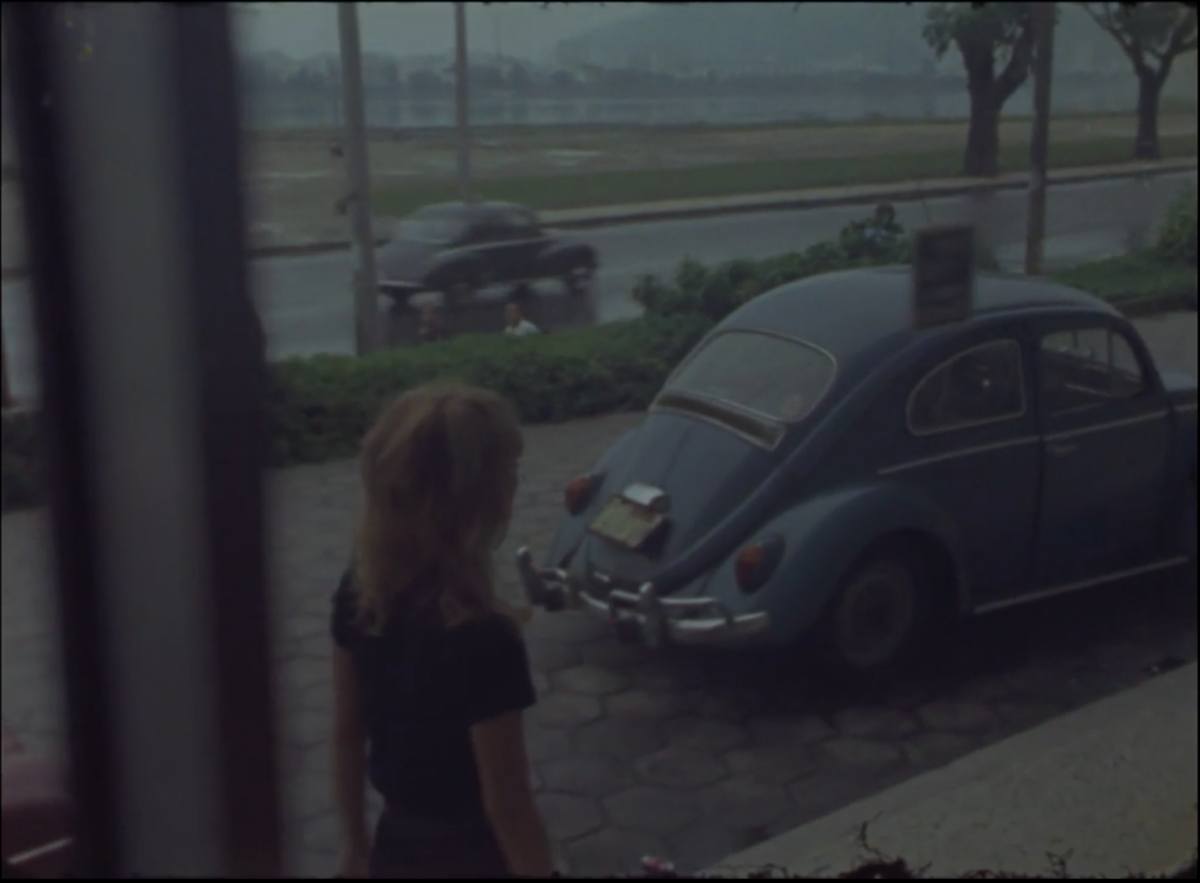The Red Light Bandit (O Bandido da luz vermelha, 1968), the first feature by the then 22 year-old Rogério Sganzerla, was considered a public success — the revenue from ticket sales recouped its production budget in just one week. His second feature, The Woman of Everyone (A Mulher de todos, 1969), was also successful, earning twice the overall profit of his first filmThe production of these two early works was tied to Boca do Lixo, a historically important filmmaking community that took its name from an impoverished São Paulo district in the center city that consisted of points of organized prostitution and crime. Coexisting harmoniously within the neighborhood, the independent filmmakers who comprised Cinema da Boca do Lixo produced films with a great deal of autonomy. They were maligned publicly and officially, definite outsiders of mainstream Brazilian cinema who nonetheless found a foothold through private distribution efforts. Sganzerla’s early public success was largely related to their structure and popular appeal.. Despite The Red Light Bandit drawing its inspiration from a sensational true-crime story that was featured in numerous Brazilian media outlets, neither film could be described as mainstream or predictable. Of course, it’s possible to draw parallels between Sganzerla and his predecessors — such as chanchadas (a popular genre of comedy from the 50s and a specialty of the Brazilian studio Atlântida) — and even with contemporary filmmakers associated with Cinema Novo.
The differences, however, are also very striking. Cinema Novo’s most famous films are typically set in the interior of Brazil’s Northeast Region and represent the struggles of its populationWe could give special mention to Glauber Rocha’s Black God, White Devil (Deus e o Diabo na Terra do Sol, 1964), The Guns (Os Fuzis, 1964) by Ruy Guerra, and Barren Lives (Vidas Secas, 1963) by Nelson Pereira dos Santos.. Those films represent a totally different atmosphere when compared to Sganzela’s work, which, at this stage, is primarily set in cities. And, when looking at the Cinema Novo films that do take place in cities,To name a few: Rio, Zona Norte and Rio 40 Graus, two films directed by Nelson Pereira dos Santos from the late 1950s, the anthology film Cinco Vezes Favela (1962), Carlos Diegues’s A Cidade Grande (1966), Roberto Pires’s A Grande Feira (1961), Luiz Sérgio Person’s São Paulo S.A. (1965). All of these films predate Sganzerla’s work. we find a drastically different portrayal to Sganzerla’s. Class division, for instance, tended to influence both the content and outlook of urban-set Cinema Novo films. For the privileged, the city is a space of alienation, marked by cold social interaction, anguish, and a lack of meaning (examples include Luiz Sérgio Person’s São Paulo, S.A. and Walter Hugo Khouri’s 1964 film Noite Vazia, both of which are set in São Paulo). On the other hand, for representatives of the lower classes, the city is hostile, actively conspiring against them and their desires. Tellingly, these characters have recently relocated to the city and the narratives make clear that the city is no place for them, despite moments of resistance often scored with Samba music.
Remarkably, the way Sganzerla’s characters belong to the city is altogether different. He posits a world where the city is their stage and the city is them, they incorporate its rhythm into the fabric of the films. The improvised structures of Sganzerla’s films also mimic the development of the cities in which they’re set. Both São Paulo and Rio were cities founded on migration where people sought work. Rio was, for a long time, Brazil’s capital while São Paulo was an industrial and financial pole. Both cities grew quickly and outpaced the precarious urban planning within them, contributing to a chaotic, makeshift ambience. In a reflection of this movement, Sganzerla offered new forms to depict the city in his films.
In 1970, with the profits from his first two features, Sganzerla started a small production company named Belair with fellow filmmaker Julio Bressane and Helena Ignez, his frequent leading actress and life partner. In a period of three months, they shot six feature films, including two directed by Sganzerla himself: Copacabana, mon Amour (1970) and No Way, Spider (Sem essa aranha, 1970). However, despite his efforts and previous success, neither of them was allowed to screen commercially.
Part of the problem was Brazil’s political climate. Put in place to “uphold good morals” and maintain the power held by the upper classes, the military government’s censorship policies were an obstacle for artists since the coup d’etat in 1964Beginning in the mid 1950’s, Brazil saw an increase in left-wing political engagement in society at large, from the peasants to the artistic class. Amid the Cuban Revolution in 1959 and the presidential ascendance of left-wing sympathizer João Goulart in 1961, the upper classes, with the support of US intervention, staged a coup-de-état in order to consolidate their control., and, beginning in 1968, they were enforced even more severelyLeftwing partisans and artists deemed “subversive” were subject to arrest, torture, and murder; the mounting fear in the art scenes led either to the practice of self-censorship or precautionary measures on the part of many artists and cultural figures (filmmakers, for instance, would develop their work in makeshift labs in order to forego federal supervision). Even in instances where the government didn’t officially take part in censorship, many artists were forced into exile for fear of punishment. In some instances artists were black listed for many years, restraining production of their work. In the more extreme cases artists were arrested and tortured. Among those who fled were Sganzerla and Ignez, who, between 1970 and 1972, lived in England and then Morocco, before finally returning to Brazil.. Along with the political reality (which affected all filmmakers in one way or another, in some cases blocking presentation and distribution, leaving some films lost and yet to be rediscovered), another factor that could have contributed to Sganzerla’s outsider status was his outspoken, opinionated personalityBecause he was given to polemic and diatribe he had trouble financing, producing, and distributing his films throughout his whole life, even though he was well-known by audiences and the frequent subject of criticism and academic studies. Early on he had already gained notoriety as a film critic at a major São Paulo newspaper, even covering several European film festivals, while The Red Light Bandit was an immediate sensation and marked Brazilian film history.. In more than one interview he blamed conservative temperaments in the artistic milieu for preventing his films from reaching a wider audience after his exile. In his words, Copacabana, Mon Amour, and No Way, Spider had too many handheld camera sequences to be distributedThis quote is from an interview from the 1980’s published in Entrevistas – Rogério Sganzerla (org. Roberta Canuto), Rio de Janeiro: Beco do Azougue Editorial, 2007..
Both films feature three foundational aspects of Sganzerla’s practice in the Belair period: first, the description of space with an almost documentarian ethos, presenting both peripheral and central neighborhoods of Rio de Janeiro and their inhabitants. Second, an improvised, histrionic acting style used to portray characters that drew heavily on genre signifiers and stereotypes; caricatures who were aimless wanderers in the city. And, third, the handheld camera, which infused his location-shooting with uninhibited spontaneity, maximizing the cacophony of his planned sequence shots and their settings.
In No Way, Spider these three emblems of Sganzerla’s cinema produce a schizophrenic state, but also a very unique poetics: each gesture leads to a different type of motion that balances rehearsal and improvisation. The unpredictable rhythms of Rio are the backdrop, hectic phenomena like traffic, pedestrians, and lightning are all welcome; the actors, who interact with chance, establish a direct contact with the camera; the camera itself, whose constant motion oscillates between very precise and very loose framing, synthesizes the otherwise opposing elements.
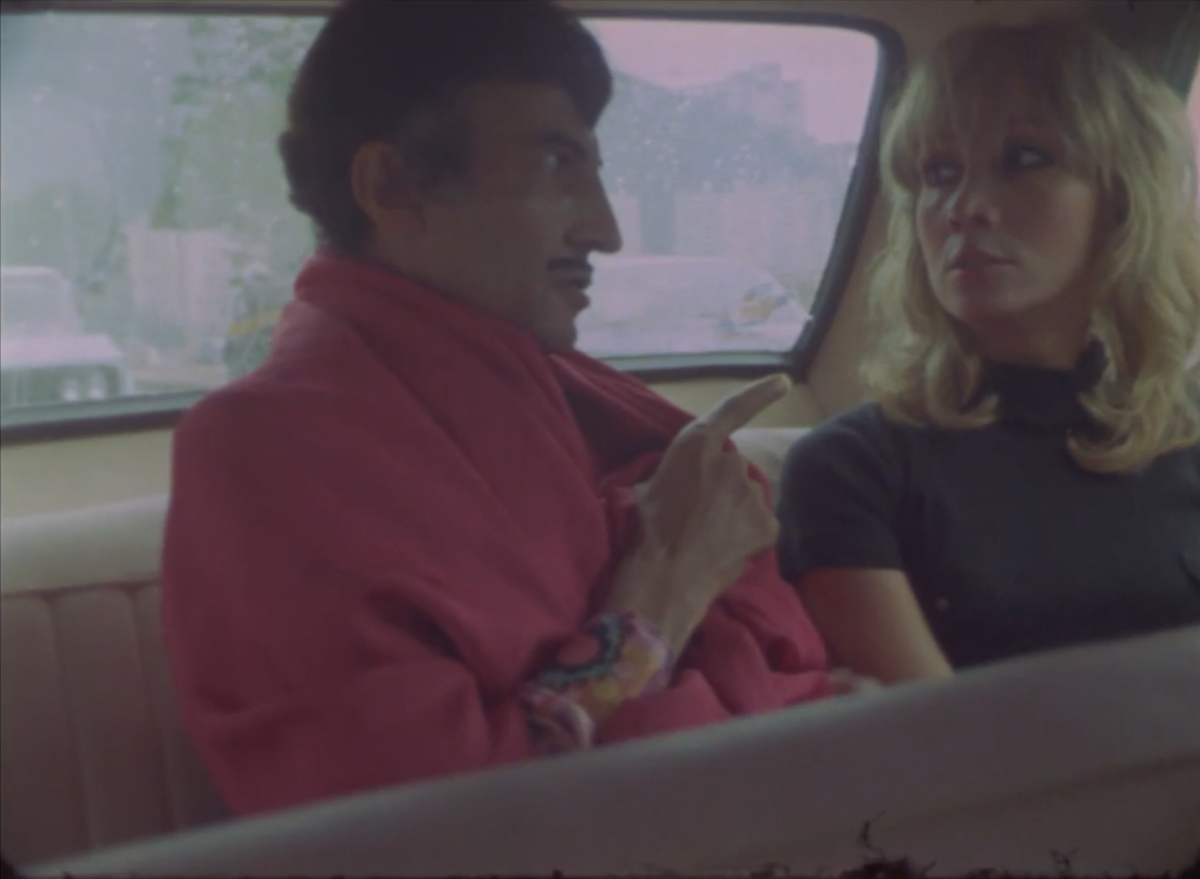
In the first shot the main character, Aranha (José Loredo), addresses the camera directly and invites us to follow him until the film’s end. Wearing an oversized hat and exhibiting a mannered performance style typified by repetitive gestures, he often speaks in rhyme, quoting popular Brazilian sayings, and makes disconnected, grandiloquent declarations. As Aranha walks into a nondescript Rio car dealership through its glass door entrance, the camera pans to show us cars speeding by along a neighboring avenue, while the cars on display within the dealership remain fixed in place. The pane glass walls of the dealership make it possible to hold the interior and exterior spaces within a single frame. Then, with a sudden cut we observe a blonde woman, Helena Ignez, walking down the street. Eventually, Aranha walks out and decides to join her in the backseat of a car about to drive off. In an uninterrupted shot, the camera (and its operator) accompanies them, occupying the passenger seat. The engine starts as the characters act out an inscrutable yet violent dispute.
The stylized, angular compositions lend the mise-en-scene to comparison with some Classic Hollywood films — particularly those of Orson WellesSganzerla never made a secret of his admiration for Welles; he even produced two films related to the latter’s unfinished account of his passage in Brazil, titled It’s All True (1942): Nem Tudo é Verdade (1986), a fiction, and A Linguagem de Orson Welles (1990), a short documentary. — but the persistence of the unwieldy sequence plan, which makes apparent the fact that someone follows the characters with a camera in hand, reveals the film’s production as it unfolds. As the first scene concludes, the car drives to another part of Rio de Janeiro, far from the wide avenues near the beach. The remainder of the film will be set, for the most part, in dark bars, cabarets, backstages and on the streets of Rio de Janeiro’s sloping shantytowns.
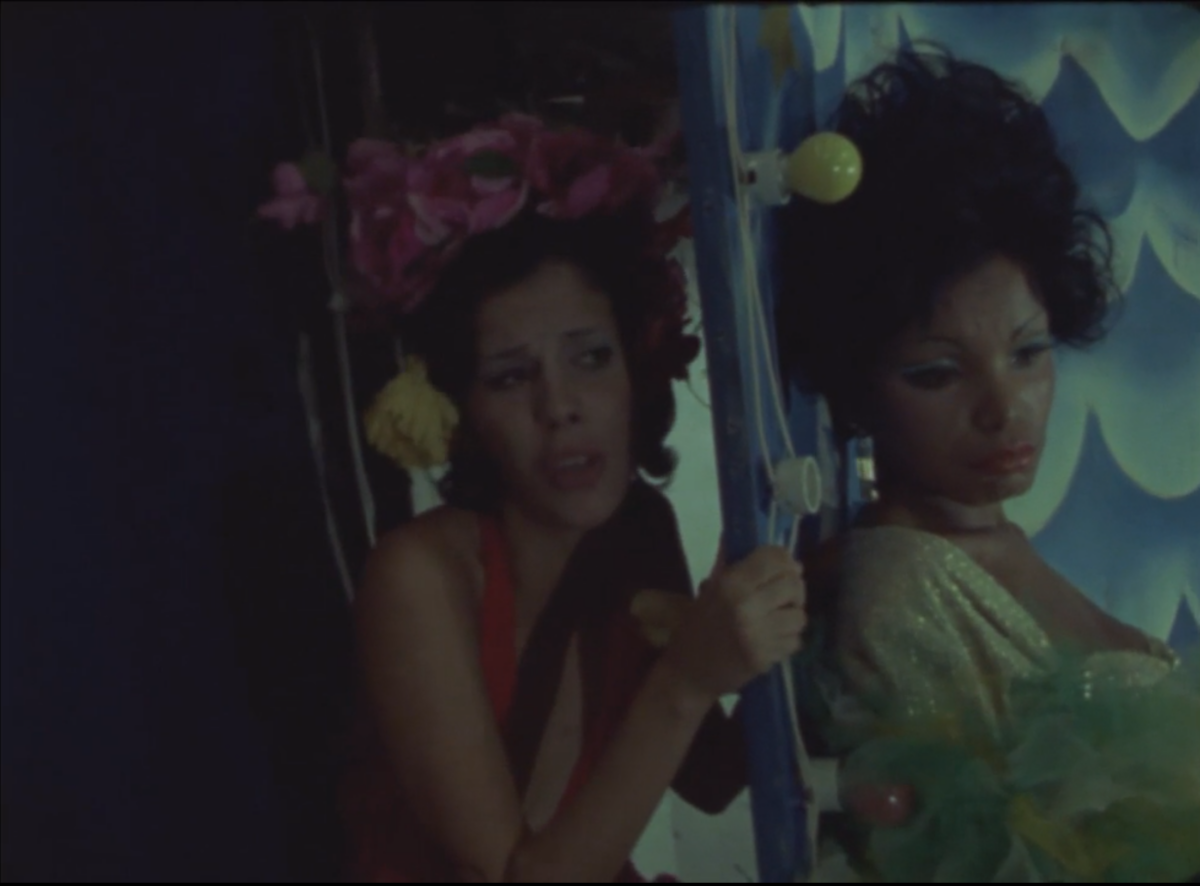
As the film continues one begins to grasp that Aranha, who refers to himself as Zé Bonitinho (Dashing Joe), is probably a womanizing cabaret or circus manager, or perhaps a politician or banker. His social class and profession remain somewhat mysterious and indefinite. Besides José Louredo and Ignez, two other actors comprise the film’s principal cast: Maria Gladys, playing a member of Aranha’s troupe who is always complaining about a stomach ache, and Aparecida, playing a cabaret dancer. Sganzerla’s people exist in the margins where limits are ill-defined, far away from the day-to-day routine of a society, its duties, responsibilities, and political concerns. He has a fondness for wayfaring street people, a relatively prominent class of Brazilians, people that live from hand to mouth and readily accept any kind of job to make a living. This unstable life seems to be the perfect subject for his particular form of filmmaking.
The characters don’t change throughout the film, and instead of a conventional character arc Sganzerla leans on archetypal figures and arrests their development within scenarios that typically don’t cohere and defy traditional dramatic progress. Moreover, whether they’re bearing witness to atrocities or enjoying a scenic vista in a luxurious mansion, their behavior doesn’t change, doesn’t correspond to their environment. They repeat themselves in perpetuity, almost like a broken record. And, along with them, the camera and their surroundings are always in motion, so the main feeling is one of dislocated fragmentation and repetition.
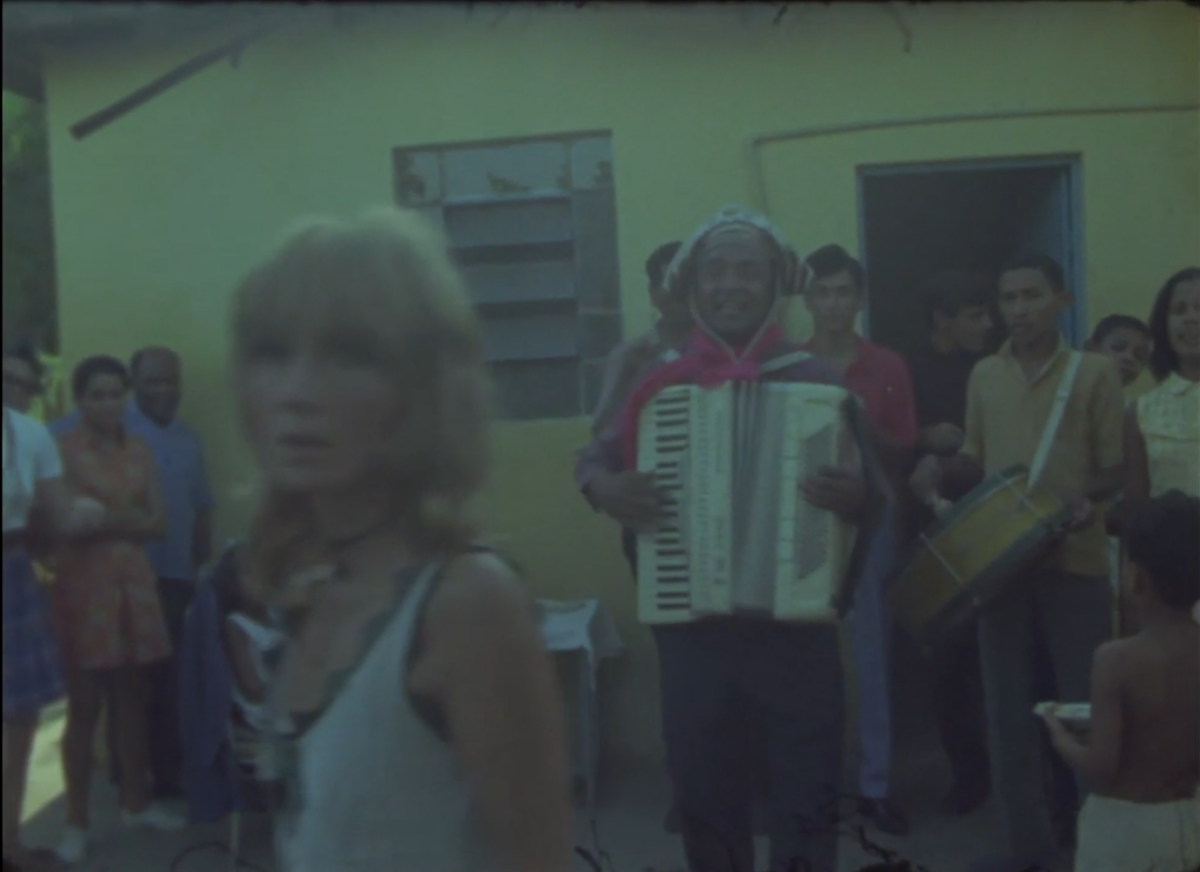
In a later scene set on a wide, sloping road in the periphery of Rio de Janeiro, the principal cast frantically play their roles among passersby in the scenario. Some stop to watch the actors scream and run from one place to another, some walk through the frame with quizzical looks. This is perhaps the best example of what Sganzerla describes as “taking advantage of reality directly,” where reality is not referred to as an abstract concept or a naturalistic ideal, but incorporated into the film raw. In the midst of this chaotic happening, Aparecida tells the story of how she ended up going abroad to make some money. Her agents, it turns out, expected her to prostitute herself after her performances. A glimpse of what could be a true story, a Brazilian woman’s experience. The contrast between this comparatively naturalistic, testimonial retelling of melodramatic content and the excessive, gestural performances around her creates a remarkable moment, albeit one without consequence — it gets lost in the fabric of the film. The ability to coexist with different registers of performances, sometimes quite moving, sometimes grotesque, could be compared to a circus or a television talk show, where competing tones can occupy the same space. The film navigates between them as if they were different radio stations that one could toggle or channel surf. The camera, for its part, never stops recording, never imposes its time on the characters, never controls the ambience. It exists among them.
Along with the camera’s increasingly synthetic presentation of locations and spectators, Sganzerla’s scenario demands that the cast incorporate a radical and experimental physical performance style, such as when Helena Ignez and Maria Gladys pretend to vomit out of a window in a nightclub. Besides the intense work required to deliver such larger-than-life performances, the director recruits other artists of the body, such as a fire-eater and an acrobat who performs a stunning feat of balance atop a motorcycle. Two moments among many in yet another winding sequence shot set in a circus, full of wardrobe changes and frenzied action.
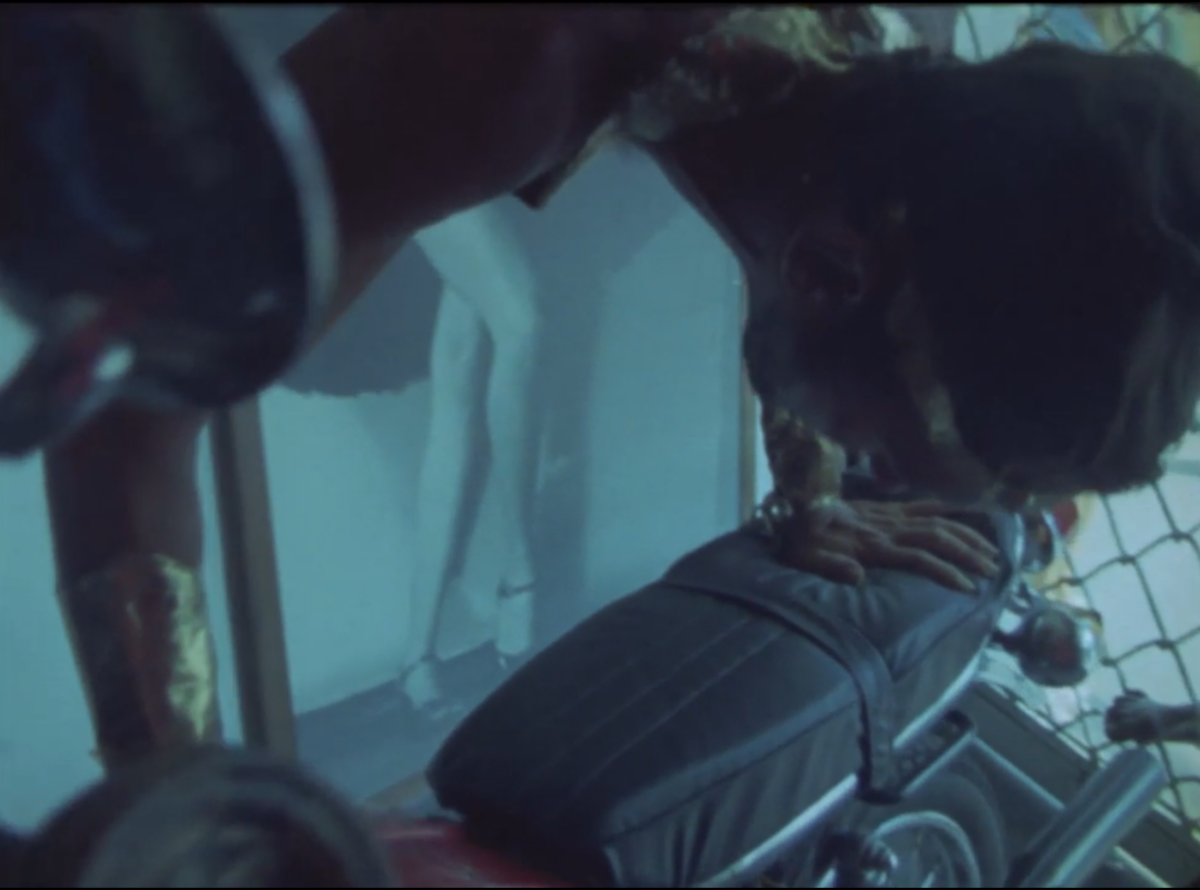
In fact the circus and its nomad performers occupy a special place in Sganzerla’s idea of cinema. He once wroteHe develops this idea in a preface for a collection of his critical work named Por um cinema sem limite. (Rio De Janeiro: Azougue, 200). that cinema had its roots in Chinese shadow puppetry, which spread through Asia and Europe thanks to nomads and barkers who toured circuses and fairs, providing something magical for their audiences. He draws a direct line between this itinerant, peripatetic migration, and movement in the cinema, either from the camera or on the part of the actors.
His artesanal way of creating imagens with a lightweight 16mm camera in hand, travelling arbitrarily from one location to another suggests that he positioned himself along with the vagabond artists, bringing the cinema directly to the world. His “amateurish” or “precarious” visual look constituted a political and artistic statement that provided an alternative to the hegemony of mainstream productions and grappled directly with the supposed difficulties of producing films in Third World countries. Among the cineastes of that generation, Sganzerla’s confrontational spirit belies a radical practice at its core, literally moving further outward into the real world, incorporating it into his ostensible fictions, and redistributing its kinetic energy into a disharmony of incandescent, stifled commentary. In his words: “Brazilian cinema is the cinema of risk, where everything is possible”.
